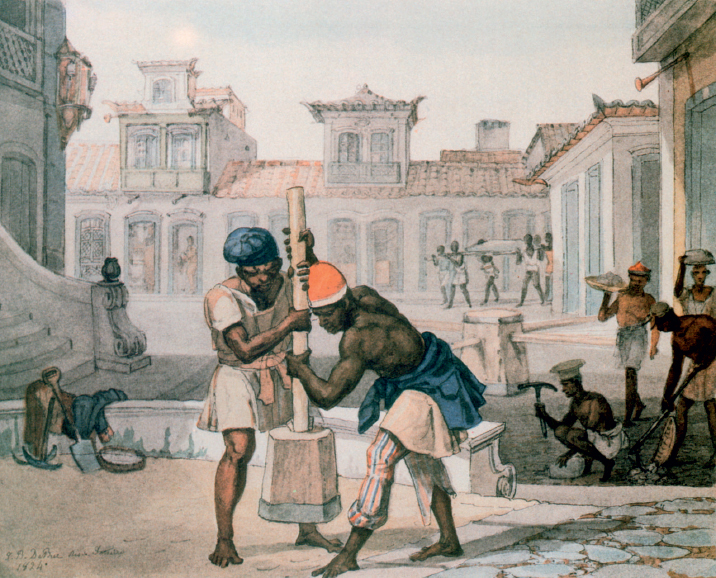Understanding World Societies:
Printed Page 821
> Why did slavery last longer in the United States, Brazil, and Cuba than in other republics of the Americas? How did patterns of resistance shape slavery and abolition?
AACROSS THE FORMER COLONIES OF SPANISH AMERICA , the abolition of slavery quickly followed independence. Abolitionist pressure from Britain ended slavery in its Caribbean colonies in 1834, and the British navy suppressed the Atlantic slave trade. But slavery endured well into the nineteenth century in the United States, Cuba, and Brazil. In each of these countries the question of abolition became entwined with the disputes over the nature of government and authority.

Slave Labor in Rio de Janeiro, Brazil
This lithograph by French traveler Jean-Baptiste Debret shows different facets of urban slavery in Rio de Janeiro. In the foreground slaves lay paving stones in a plaza, while behind them other slaves peddle food. A funeral procession passes in the background. (from Voyage Pittoresque et Historique au Bresil, 1824 color lithograph by Jean-Baptiste Debret [1768–1848] published in 1839/Bibliotheque Nationale, Paris, France/Archives Charmet/The Bridgeman Art Library)
This lithograph by French traveler Jean-